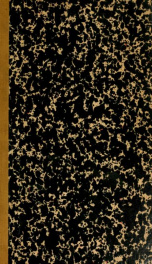maryland

Maryland ( /ˈmɛrələnd/ (help·info))[6] is a state located in the Mid Atlantic region of the United States, bordering Virginia, West Virginia and the District of Columbia to the south and west, Pennsylvania to the north, and Delaware to the east. It is comparable in size to the European country of Belgium.[7] According to the U.S. Census Bureau, Maryland has the highest median household income of any state, having surpassed New Jersey in 2006; Maryland's median household income was $68,080 in 2007.[4] For 2009, Maryland ranked first—for the third year in a row—as the U.S. state with the highest median income for 2008, with a median income of $70,545.[8] It was the seventh state to ratify the United States Constitution and bears two nicknames, the Old Line State and the Free State. Maryland is a life sciences hub with over 350 biotechnology firms, making it the third-largest such cluster in the nation.[9] Institutions and agencies located throughout Maryland include the University System of Maryland, The Johns Hopkins University, Howard Hughes Medical Institute, Celera Genomics, Human Genome Sciences (HGS), the J. Craig Venter Institute (JCVI), the Food and Drug Administration (FDA), MedImmune (recently purchased by AstraZeneca), the National Institutes of Health (NIH), and the National Institute of Standards and Technology (NIST). Maryland possesses a great variety of topography, hence its nickname, "America in Miniature."[10] It ranges from sandy dunes dotted with seagrass in the east, to low marshlands teeming with wildlife and large bald cypress near the bay, to gently rolling hills of oak forest in the Piedmont Region, and pine groves in the mountains to the west. The highest point in Maryland, with an elevation of 3,360 feet (1,020 m), is Hoye Crest on Backbone Mountain, in the southwest corner of Garrett County, near the border with West Virginia and near the headwaters of the North Branch of the Potomac River. One of Maryland's ski areas, Wisp, is located close to Backbone Mountain. Close to the small town of Hancock, in western Maryland, about two-thirds of the way across the state, there is only about 1 mile (2 km) between its borders. This geographical curiosity makes Maryland the narrowest state, bordered by the Mason-Dixon Line to the north, and the north-arching Potomac River to the south. Portions of Maryland are included in various official and unofficial geographic regions. For example, the Delmarva Peninsula comprises the Eastern Shore counties of Maryland, the entire State of Delaware, and the two counties that make up the Eastern Shore of Virginia, while the westernmost counties of Maryland are considered part of Appalachia. Much of the Baltimore–Washington corridor lies just south of the Piedmont in the Coastal Plain,[11] though it straddles the border between the two regions. A quirk of Maryland's geography is that the state contains no natural lakes.[12] During the last Ice Age, glaciers did not reach as far south as Maryland, and therefore did not carve out deep natural lakes as exist in northern states. There are numerous man-made lakes, the largest being Deep Creek Lake, a reservoir in Garrett County. The lack of glacial history also accounts for Maryland's soil, which is more sandy and muddy than the rocky soils of New England. The majority of Maryland's population is concentrated in the cities and suburbs surrounding Washington, DC and Maryland's most populous city, Baltimore. Historically, these and many other Maryland cities developed along the fall line, the point at which rivers are no longer navigable from sea level due to the presence of rapids or waterfalls. Maryland's capital, Annapolis, is one exception to this rule, lying along the Severn River close to where it empties into the Chesapeake Bay. Other major population centers include suburban hubs Columbia in Howard County, Silver Spring, Rockville and Gaithersburg in Montgomery County, Frederick in Frederick County and Hagerstown in Washington County. The eastern, southern, and western portions of the state tend to be more rural, although they are dotted with cities of regional importance such as Salisbury and Ocean City on the Eastern Shore, Lexington Park and Waldorf in Southern Maryland, and Cumberland in Western Maryland. Maryland's history as a border state has led it to exhibit characteristics of both the Northern and Southern regions of the United States. Generally, rural Western Maryland between the West Virginian Panhandle and Pennsylvania has an Appalachian culture, the Southern and Eastern Shore regions of Maryland emulate a Southern culture,[13] while densely-populated Central Maryland—radiating outward from Baltimore and Washington D.C.—has more in common with of the Northeast.[14] The U.S. Census Bureau designates Maryland as one of the South Atlantic States, but it is commonly associated with the Mid-Atlantic States and/or Northeastern United States by other federal agencies, the media, and some residents.[15][16][17][18][19] Annapolis Baltimore Baltimore's Inner Harbor Bethesda Bowie Chesapeake City College Park Cumberland Ellicott City Frederick Gaithersburg Greenbelt Hagerstown Laurel Ocean City Prince Frederick Rockville Silver Spring Upper Marlboro Maryland has a wide array of climates for a state of its size. It depends on numerous variables, such as proximity to water, elevation, and protection from colder weather due to downslope winds. The eastern half of Maryland lies on the Atlantic Coastal Plain, with very flat topography and very sandy or muddy soil. This region has a humid subtropical climate, with hot, humid summers and a short, mild to cool winter. This region includes the cities of Salisbury, Annapolis, Ocean City, and southern and eastern greater Baltimore. Beyond this region lies the Piedmont which lies in the transition between the humid subtropical climate zone and the subtropical highland zone (Köppen Cfb), with hot, humid summers and cool winters where average annual snowfall exceeds 20 inches and temperatures below 10°F are annual occurrences. This region includes Frederick, Hagerstown, Westminster, Gaithersburg and northern and western greater Baltimore. Extreme western Maryland, in the higher elevations of Allegany County and Garrett County lie completely in the subtropical highland (Köppen Cfb)[20] zone, due to elevation (more typical of the Appalachian mountain region) with milder summers and cool, often snowy winters. Precipitation in the state is characteristic of the East Coast. Annual rainfall ranges from 35 to 45 inches (890 to 1,100 mm) with more in higher elevations.[21] Nearly every part of Maryland receives 3.5–4.5 inches (89–110 mm) per month of precipitation. Snowfall varies from 9 inches (23 cm) in the coastal areas to over 100 inches (250 cm) a winter in the western mountains of the state.[22] Because of its location near the Atlantic Coast, Maryland is somewhat vulnerable to tropical cyclones, although the Delmarva Peninsula, and the outer banks of North Carolina to the south provide a large buffer, such that a strike from a major hurricane (category 3 or above) is not very likely. More often, Maryland might get the remnants of a tropical system which has already come ashore and released most of its wind energy. Maryland averages around 30–40 days of thunderstorms a year, and averages around six tornado strikes annually.[23] As is typical of states on the East Coast, Maryland's plant life is abundant and healthy. A good dose of annual precipitation helps to support many types of plants, including seagrass and various reeds at the smaller end of the spectrum to the gigantic Wye Oak, a huge example of White oak, the state tree, which can grow in excess of 70 feet (21 m) tall. Maryland also possesses an abundance of pines and maples among its endemic tree life. Many foreign species are cultivated in the state, some as ornamentals, others as novelty species. Included among these are the Crape Myrtle, Italian Cypress, live oak in the warmer parts of the state,[25] and even hardy palm trees in the warmer central and eastern parts of the state.[26] USDA plant hardiness zones in the state range from Zone 5 in the extreme western part of the state to 6 and 7 in the central part, and Zone 8 around the southern part of the coast, the bay area, and most of metropolitan Baltimore. Invasive plant species, such as kudzu, tree of heaven, multiflora rose, and Japanese stiltgrass, choke out growth of endemic plant life.[27] Maryland's state flower, the Black-eyed Susan, grows in abundance in wild flower groups throughout the state. The state insect, the Baltimore Checkerspot Butterfly, is not common as it is near the southern edge of its range.[28] 435 species of bird have been reported from Maryland.[29] The state harbors a great number of deer, particularly in the woody and mountainous west of the state, and overpopulation can become a problem from year-to-year. The Chesapeake Bay provides the state with its huge cash crop of blue crabs, rockfish, and numerous seabirds. Mammals can be found ranging from the mountains in the west to the central areas and include bears,[30]bobcats,[31] foxes, raccoons, and Otters.[30] Maryland is famous for its population of rare[30][32] wild horses found on Assateague island. Every year an event occurs during which members of the horse population are captured and waded across a shallow bay to Chincoteague, Virginia. This conservation technique ensures the tiny island is not overrun by the horses. Another purebred animal from Maryland is the Chesapeake Bay Retriever dog, which was bred specifically for water sports, hunting and search and rescue in the Chesapeake area.[33] The Chesapeake Bay Retriever was also the first breed recognized by the American Kennel Club in 1878.[33] Maryland's reptile and amphibian population is led by the Diamondback Terrapin turtle, which was adopted as the mascot of University of Maryland. The state also hosts the Baltimore Oriole, which is the official state bird and mascot of the MLB team the Baltimore Orioles.[34] Lawns in Maryland carry a variety of species, mostly due to its location in the Transition Zone for lawngrasses. The western part of the state is cold enough to support Kentucky Bluegrass, and Fine Fescues, which are widespread from the foothills west. The area around the Chesapeake Bay is usually turfed with transition species such as Zoysia, Tall fescue, and Bermudagrass. St. Augustine grass can be grown in the parts of the state that are in Zone 8.
do you like this author?
What readers are saying
What do you think? Write your own comment on this book!
write a commentWhat readers are saying
What do you think? Write your own comment on this author!
write a commentBook list

The welfare of infants of illegitimate birth in Baltimore as affected by a Maryland law of 1916 governing the separation from their mothers of children under 6 months old
Series:
Unknown
Year:
Unknown
Raiting:
3/5
"Text of the Maryland law of 1916 governing the separation of children under 6 months from their mothers: p. 23-24 pt. I. Mortality among infants born out of wedlock in 1915 and 1921, by Rena Rosenberg.--pt. II. Effect of the law on the policies and work of social agencies, by A. Madorah Donahue
Show more
add to favoritesadd In favorites

Corporation law of Maryland
Series:
Unknown
Year:
Unknown
Raiting:
5/5
Book digitized by Google from the library of Harvard University and uploaded to the Internet Archive by user tpb.
Show more
add to favoritesadd In favorites

The constitution of the state of Maryland, reported and adopted by the Convention of delegates assembled at the city of Annapolis, November 4th, 1850, and submitted to and ratified by the people, on the first Wednesday of June, 1851
Series:
Unknown
Year:
Unknown
Raiting:
5/5
Book digitized by Google from the library of the University of Michigan and uploaded to the Internet Archive by user tpb.
Show more
add to favoritesadd In favorites
Book list

The welfare of infants of illegitimate birth in Baltimore as affected by a Maryland law of 1916 governing the separation from their mothers of children under 6 months old
Series:
Unknown
Year:
Unknown
Raiting:
3/5
"Text of the Maryland law of 1916 governing the separation of children under 6 months from their mothers: p. 23-24 pt. I. Mortality among infants born out of wedlock in 1915 and 1921, by Rena Rosenberg.--pt. II. Effect of the law on the policies and work of social agencies, by A. Madorah Donahue
Show more
add to favoritesadd In favorites

Corporation law of Maryland
Series:
Unknown
Year:
Unknown
Raiting:
5/5
Book digitized by Google from the library of Harvard University and uploaded to the Internet Archive by user tpb.
Show more
add to favoritesadd In favorites

The constitution of the state of Maryland, reported and adopted by the Convention of delegates assembled at the city of Annapolis, November 4th, 1850, and submitted to and ratified by the people, on the first Wednesday of June, 1851
Series:
Unknown
Year:
Unknown
Raiting:
5/5
Book digitized by Google from the library of the University of Michigan and uploaded to the Internet Archive by user tpb.
Show more
add to favoritesadd In favorites

A Compilation of Maryland Laws of Interest to Women
Series:
Unknown
Year:
Unknown
Raiting:
3.5/5
Book digitized by Google from the library of the New York Public Library and uploaded to the Internet Archive by user tpb.
Show more
add to favoritesadd In favorites

Workmen's compensation law of the State of Maryland
Series:
Unknown
Year:
Unknown
Raiting:
3.5/5
Book digitized by Google from the library of Harvard University and uploaded to the Internet Archive by user tpb. Vols. for <1914>-37 issued by F.R. Jones; 1938-46 by the Association of Casualty and Surety Executives; 1947- by the Association of Casualty and Surety Companies SERBIB/SERLOC merged record
Show more
add to favoritesadd In favorites

The constitution of the state of Maryland, reported and adopted by the Convention of delegates assembled at the city of Annapolis, November 4th, 1850, and submitted to and ratified by the people, on the first Wednesday of June, 1851
Series:
Unknown
Year:
Unknown
Raiting:
2.5/5
Book digitized by Google from the library of Harvard University and uploaded to the Internet Archive by user tpb.
Show more
add to favoritesadd In favorites

The constitution of the state of Maryland, reported and adopted by the Convention of delegates assembled at the city of Annapolis, November 4th, 1850, and submitted to and ratified by the people, on the first Wednesday of June, 1851
Series:
Unknown
Year:
Unknown
Raiting:
5/5
Show more
add to favoritesadd In favorites

The Maryland code : public general laws : adopted by the General Assembly of Maryland, March 14, 1888 : including also the acts of the session of 1888 incorporated therein...
Series:
Unknown
Year:
Unknown
Raiting:
2.5/5
Book digitized by Google from the library of Harvard University and uploaded to the Internet Archive by user tpb.
Show more
add to favoritesadd In favorites

List of the titles of the laws and resolutions made and passed December session 1849
Series:
Unknown
Year:
Unknown
Raiting:
4.5/5
Maryland. General Assembly. House and Senate Documents.
Show more
add to favoritesadd In favorites

List of the titles of the laws and resolutions made and passed at January session, 1852
Series:
Unknown
Year:
Unknown
Raiting:
3/5
Maryland. General Assembly. House and Senate Documents.
Show more
add to favoritesadd In favorites

List of the titles of the laws and resolutions made and passed at January session, 1853
Series:
Unknown
Year:
Unknown
Raiting:
4.5/5
Maryland. General Assembly. House and Senate Documents.
Show more
add to favoritesadd In favorites

the public school laws of maryland as contained in the code of public general l
Series:
Unknown
Year:
Unknown
Raiting:
5/5
Show more
add to favoritesadd In favorites

the public school laws of maryland as contained in code of public general laws o
Series:
Unknown
Year:
Unknown
Raiting:
4/5
Show more
add to favoritesadd In favorites

the constitution of the state of maryland formed and adopted by the convention
Series:
Unknown
Year:
Unknown
Raiting:
4.5/5
Show more
add to favoritesadd In favorites
What readers are saying
What do you think? Write your own comment on this author!
write a commentif you like maryland try:
readers also enjoyed
What readers are saying
What do you think? Write your own comment on this author!
write a commentif you like maryland try:
readers also enjoyed
Do you want to exchange books? It’s EASY!
Get registered and find other users who want to give their favourite books to good hands!

